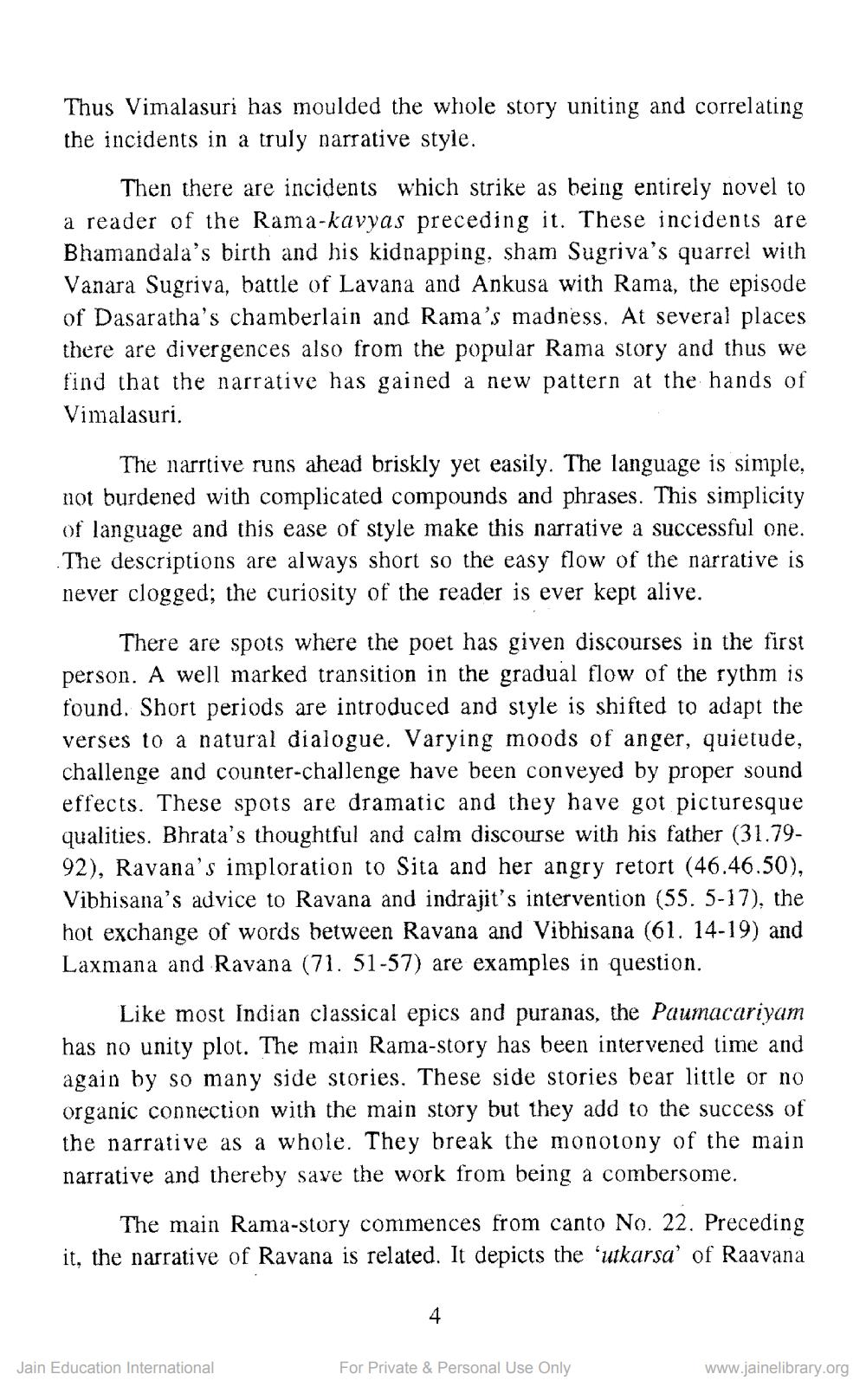Book Title: Jinamanjari 1995 09 No 12 Author(s): Jinamanjari Publisher: Canada Bramhi Jain Society Publication View full book textPage 6
________________ Thus Vimalasuri has moulded the whole story uniting and correlating the incidents in a truly narrative style. Then there are incidents which strike as being entirely novel to a reader of the Rama-kavyas preceding it. These incidents are Bhamandala's birth and his kidnapping, sham Sugriva's quarrel with Vanara Sugriva, battle of Lavana and Ankusa with Rama, the episode of Dasaratha's chamberlain and Rama's madness. At several places there are divergences also from the popular Rama story and thus we find that the narrative has gained a new pattern at the hands of Vimalasuri. The narrtive runs ahead briskly yet easily. The language is simple, not burdened with complicated compounds and phrases. This simplicity of language and this ease of style make this narrative a successful one. .The descriptions are always short so the easy flow of the narrative is never clogged; the curiosity of the reader is ever kept alive. There are spots where the poet has given discourses in the first person. A well marked transition in the gradual flow of the rythm is found. Short periods are introduced and style is shifted to adapt the verses to a natural dialogue. Varying moods of anger, quietude, challenge and counter-challenge have been conveyed by proper sound effects. These spots are dramatic and they have got picturesque qualities. Bhrata's thoughtful and calm discourse with his father (31.7992), Ravana's imploration to Sita and her angry retort (46.46.50), Vibhisana's advice to Ravana and indrajit's intervention (55. 5-17), the hot exchange of words between Ravana and Vibhisana (61. 14-19) and Laxmana and Ravana (71. 51-57) are examples in question. Like most Indian classical epics and puranas, the Paumacariyam has no unity plot. The main Rama-story has been intervened time and again by so many side stories. These side stories bear little or no organic connection with the main story but they add to the success of the narrative as a whole. They break the monotony of the main narrative and thereby save the work from being a combersome. The main Rama-story commences from canto No. 22. Preceding it, the narrative of Ravana is related. It depicts the 'utkarsa' of Raavana Jain Education International For Private & Personal Use Only www.jainelibrary.orgPage Navigation
1 ... 4 5 6 7 8 9 10 11 12 13 14 15 16 17 18 19 20 21 22 23 24 25 26 27 28 29 30 31 32 33 34 35 36 37 38 39 40 41 42 43 44 45 46 47 48 49 50 51 52 53 54 55 56 57 58 59 60 61 62 ... 88
